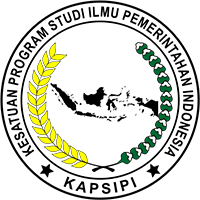Hak-Hak Masyarakat Adat, Pengakuan dan Demokrasi
Pembelajaran dari Desa Pulau Sarak Kabupaten Kampar
DOI:
https://doi.org/10.35967/njip.v21i2.375Kata Kunci:
Hak-Hak Masyarakat Adat, Pengakuan, Demokrasi, Kelembagaan AdatAbstrak
Masyarakat adat sebagai entitas negara mempunyai hak-hak konstitusional yang harus dipenuhi. Namun, eksistensi masyarakat adat dewasa ini masih termarginalisasi sehingga tidak banyak terlibat dalam penyelenggaraan pemerintahan. Berangkat dari fenomena empiris tersebut, studi ini bertujuan untuk mendeskripsikan pengakuan hak-hak masyarakat adat dan strategi pemerintah desa dalam pelaksanaan pengakuan hak-hak masyarakat adat. Penelitian ini menggunakan pendekatan kualitatif dengan sumber informasi dari pemerintah desa, tokoh adat, dan pemerintah daerah Kabupaten Kampar. Dari penelitian ini diperoleh hasil bahwa hak-hak masyarakat adat diakui dalam bentuk (1) memiliki hak otonom terhadap komunitas adatnya; (2) hak mengelola ulayatnya; (3) hak untuk mengembangkan dan melestarikan adat istiadatnya. Sementara itu, strategi pemerintah desa dalam pelaksanaan hak dan pengakuan masyarakat adat adalah dengan melakukan kolaborasi dengan kelembagaan adat dalam penyelenggaraan pemerintahan dan pelaksanaan kehidupan ekonomi, sosial, politik dan kebudayaan. Studi ini menyimpulkan bahwa proses demokratisasi telah membawa perubahan yang positif terhadap pengakuan dan perlindungan hak-hak masyarakat adat.
Unduhan
Referensi
Almegi, A. Kearifan Lingkungan Masyarakat Adat Kenagarian Rumbio, Kabupaten Kampar dalam Menjaga Kelestarian Hutan. TSAQIFA NUSANTARA: Jurnal Pembelajaran dan Isu-Isu Sosial, 1(1), 64-84
Arizona, Y. (2010). Antara teks dan konteks: Dinamika Pengakuan Hukum terhadap Hak Masyarakat Adat atas Sumber Daya Alam di Indonesia. Jakarta: HUMA
Asrinaldi, A., & Azwar, A. (2018). Dimensi Kekuasaan Penghulu Adat Melayu Riau dalam Pelaksanaan Demokrasi Lokal. Jurnal Antropologi: Isu-Isu Sosial Budaya, 20(1), 57-69.
Dewi, S. H. S., Handayani, I. G. A. K. R., & Najicha, F. U. (2020). Kedudukan Dan Perlindungan Masyarakat Adat Dalam Mendiami Hutan Adat. Jurnal Legislatif, 79-92.
Dinas Pariwisata dan Kebudayaan Kabupaten Kampar. (2011). Sejarah Kampar. Bangkinang: Pemerintah Kabupaten Kampar.
Fuentes, C. A., & Fernández, J. E. (2022). The four worlds of recognition of indigenous rights. Journal of Ethnic and Migration Studies, 48(13), 3202-3220
Grønmo, S. (2020). Social research methods: Qualitative, quantitative and mixed methods approaches. Sage
Hauser-Schäublin, B. (2013). Adat and indigeneity in Indonesia-culture and entitlements between Heteronomy and self-ascription. Universitätsverlag Göttingen.
Hidayat, Y. (2018). Penetrasi Negara Terhadap Kelembagaan Adat Nagari Pariangan Di Era Otonomi Daerah. JWP (Jurnal Wacana Politik), 3(1), 54-66.
Ivison, D., Patton, P., & Sanders, W. (Eds.). (2000). Political theory and the rights of indigenous peoples. Cambridge University Press
Landman, T. (2018). Democracy and human rights: Concepts, measures, and relationships. Politics and Governance, 6(1), 48-59
Leavy, P. (2017). Research design: Quantitative, qualitative, mixed methods, arts-based, and community-based participatory research approaches. Guilford Publications
Madonna, E. A. (2019). Penerapan Hak Masyarakat Hukum Adat Dalam Pengelolaan Hutan di Indonesia. Bina Hukum Lingkungan, 3(2), 264-278
Marta, A., Agustino, L., & Jermsittiparsert, K. (2020). Democracy under Threat: Study of the Implementation of the Rights of Indigenous Peoples to the Management of Natural Resources in Riau Province. Politik Indonesia: Indonesian Political Science Review, 5(3), 328-342
Newman, W.L (2014). Social Research Methods: Qualitative and Quantitative Approaches. Pearson.
Nurhidayah, L. (2017). Pengelolaan SDA dan Hak-hak Masyarakat Adat: Studi Kasus Enggano. Jurnal Masyarakat dan Budaya, 19(1), 27-44
Sugiswati, B. (2012). Perlindungan hukum terhadap eksistensi masyarakat adat di indonesia. Perspektif, 17(1), 31-43
Suwardi, M. S., et al (2007). Pemetaan Adat Masyarakat Melayu Riau Kabupaten/Kota Se-Propivinsi Riau. Pekanbaru: Unri Press.
Thontowi, J. (2015). Pengaturan masyarakat hukum adat dan implementasi perlindungan hak-hak tradisionalnya. Pandecta Research Law Journal, 10(1), 1-13.
Wibawa, I. P. S., Martha, I. W., & Diana, I. K. D. (2020). Menakar Kewenangan Dan Tata Hubungan Kelembagaan Antara Majelis Desa Adat Dengan Desa Adat Di Bali. Vidya Wertta: Media Komunikasi Universitas Hindu Indonesia, 3(1), 96-105
Wiryani, F., Nurjaya, I. N., & Soemitro, W. (2011). Sinkronisasi Peraturan Perundang-Undangan Di Bidang Pengelolaan Sumber Daya Alam: Kajian Tentang Pengaturan Hak-Hak Masyarakat Adat Atas Sumber Daya Alam. Wacana Journal of Social and Humanity Studies, 14(4)
Unduhan
Diterbitkan
Cara Mengutip
Terbitan
Bagian
Lisensi
Hak Cipta (c) 2022 Penulis

Artikel ini berlisensiCreative Commons Attribution-NonCommercial-ShareAlike 4.0 International License.





